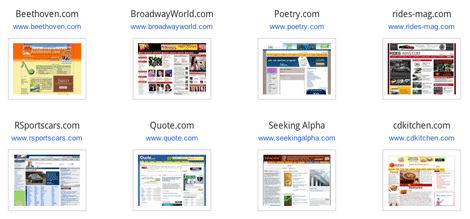I often talk about, and write about Search Network Marketing. Today I want to give a little time to Display Network Marketing. Let’s start with the key difference between the two.
The Search Network is mostly a TEXT based format. You enter a query into a search engine and receive textual links to websites which relate to that search. Yes there are a few visual elements that display in blocks here and there, but for the most part, the search network has always been (and remains) a text based network, where advertising is text based, hence the name Ad WORDS.
The display network is a VISUAL format. It is the realm of “banner ads” though certainly not in the old school sense of buying a banner on a single website. There are thousands of websites in the Google Display Network, grouped by topical categories (and other elements).

While search marketing is a powerful advertising means, some products or services do well in a visual format vs, just plain text. Both text and display ads will send you to an advertiser’s website when clicked, but visual ads that have motion and color and other forms of visual appeal, could get your attention, and may entice you to click where text alone does not.
Display Network advertising also works well for new technologies and new or unique ideas. A business may have a really cool offering that would excite you once you saw it. Yet it’s not something you’d ever search for (because you don’t know it exists). That’s where Display Network advertising outperforms search marketing. Where the Search Network delivers ads in response to a search, the Display Network delivers ads in response to prospect affinity.
Case in Point
Let’s say you’re a business that sells a product that really appeals to sports car enthusiasts. You have your ads appear in sports car blogs, forums and in sports car sections of Display Network sites. Your prospect clicks your ad, visits your site and finds the product interesting. He may purchase then and there, but let’s say he moves on … then, the following morning he visits his favorite news site. If the site is a Display Network partner, he may see your same (or a similar) ad there.
The news site has nothing to do with sports cars, but he clicked your ad yesterday and visited your site, a cookie was accepted in his browser, and that partner site read his cookie and served up another of the your ads today. That’s how the ad “followed him” from his prior visit. This is an example of re-targeting. You are targeting site visitors to see your display ads elsewhere. The repetition helps your message to sink in, or remind your prospect of that great offering.
This is just the tip of the Display Network iceberg, but it’s enough to give you an idea of what lies beneath the surface. To learn more, call or email us, and … don’t forget to spread the love below if you found this post interesting.